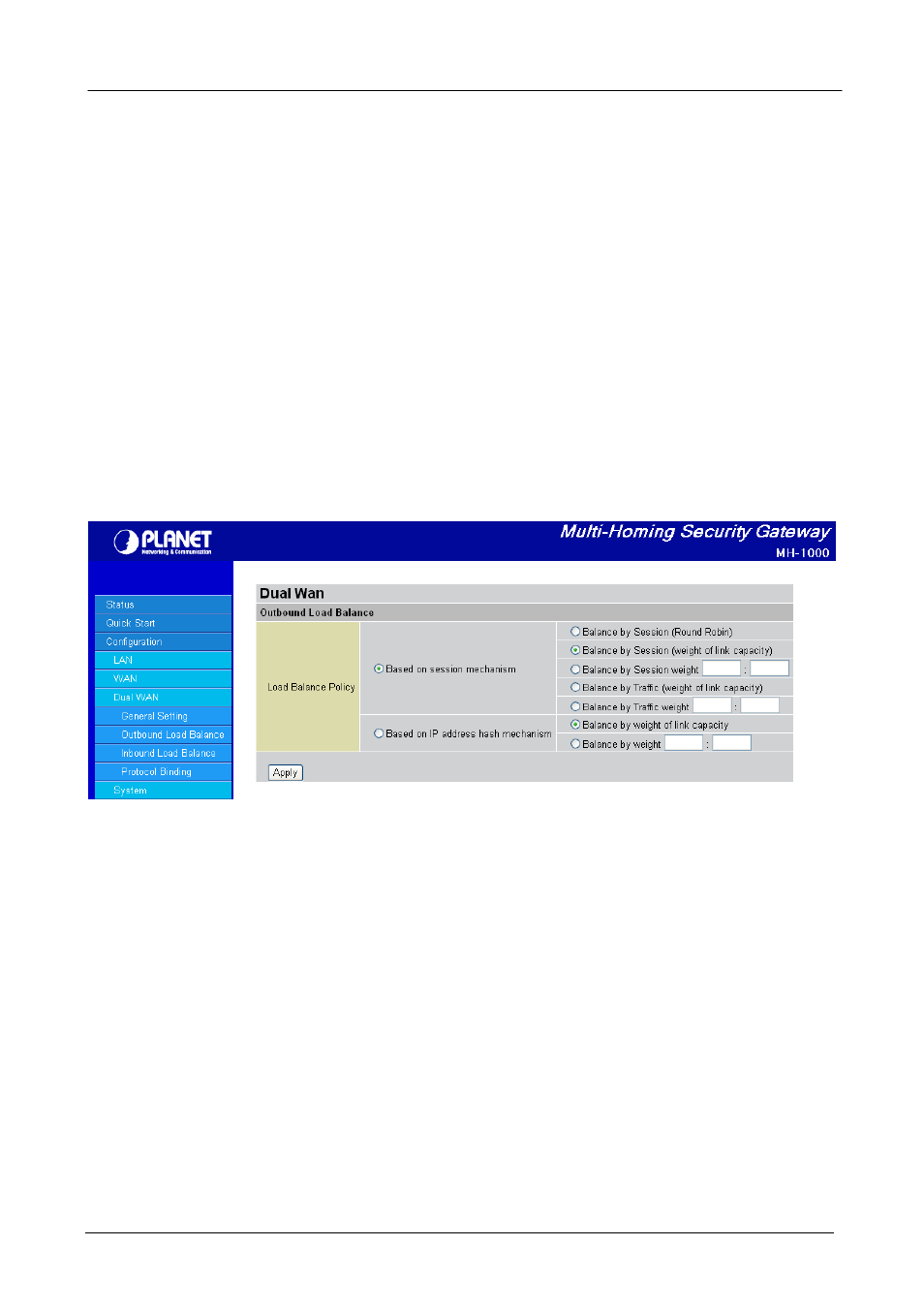2 outbound load balance – PLANET MH-1000 User Manual
Page 50

Multi-Homing Security Gateway User’s Manual
Mode:
You can select Load Balance or Fail Over.
Service Detection:
Enables or disables the service detection feature. For fail over, the service detection
function is enabled. For load balance, user is able to enable or disable it.
Connectivity Decision:
Establishes the number of times probing the connection has to fail before the
connection is judged as failed.
Probe Cycle:
The number of seconds between each probe.
Probe WAN1:
Determines if WAN1 is a gateway or host. If host is selected, please enter the IP address.
Probe WAN2:
Determines if WAN2 is a gateway or host. If host is selected, please enter the IP address.
Fail back to WAN1 when possible:
Enables or disables fail back to WAN1. This function only applies to
fail over.
Click Apply to save your changes.
4.4.3.2 Outbound Load Balance
ÍÍ
Outbound Load Balancing on MH-1000 can be based on one of two methods:
1. Based on session mechanism
2. Based on IP address hash mechanism
Choose one by clicking the corresponding radio button.
Based on session mechanism:
The source IP address and destination IP address might go through
WAN1 or WAN2 according to policy settings in this mechanism. You can choose this mechanism if the
applications the users use will not tell the difference of the WAN IP addresses. (some applications in the
Internet need to identify the source IP address, e.g. Back, Forum, …)
-
Balance by Session (Round Robin):
Balances session traffic based on a round robin method.
-
Balance by Session (weight of length capacity):
Balances session traffic based on weight of length
capacity.
-
Balance by Session weight:
Balances session traffic based on a weight ratio. Enter the desired ratio
in the blanks provided.
-
Balance by Traffic (weight of length capacity):
Balances traffic based on weight of link capacity.
- 46 -
